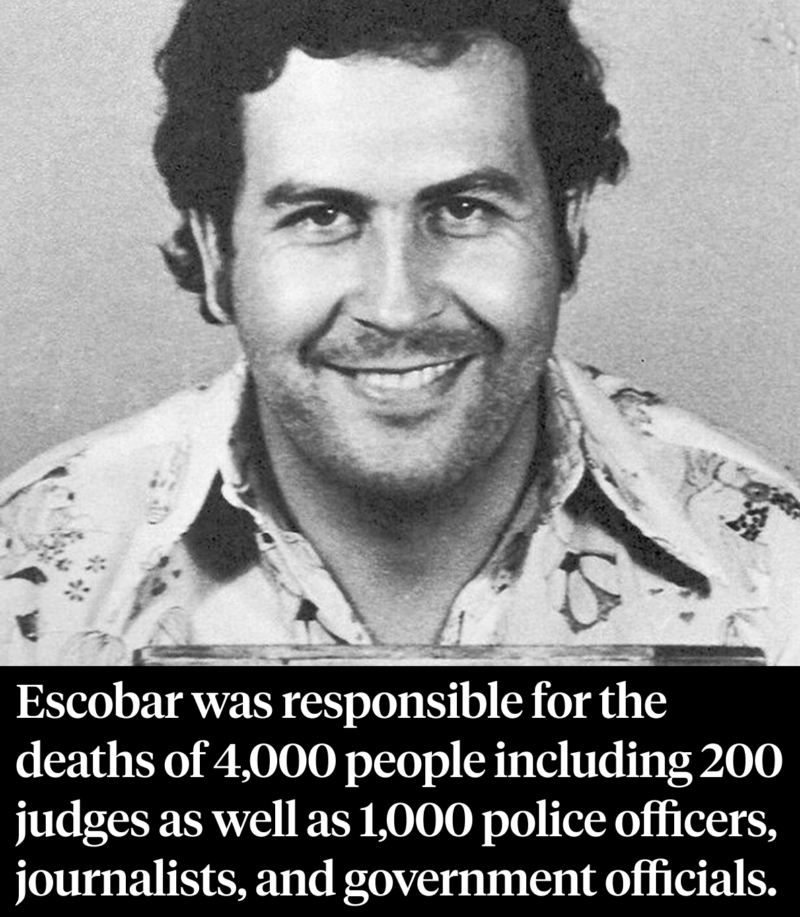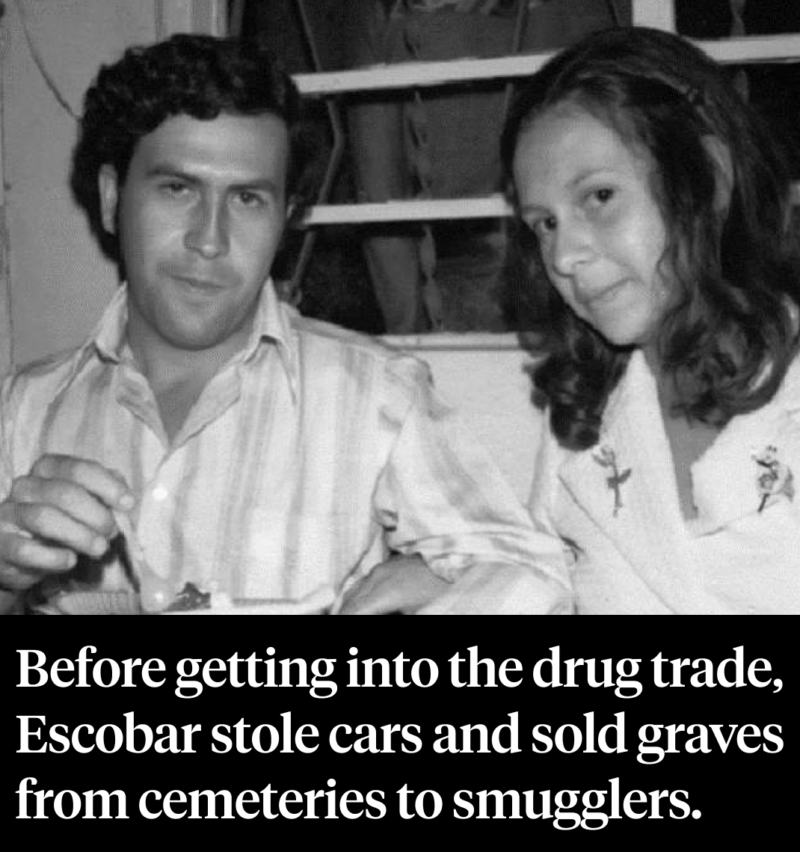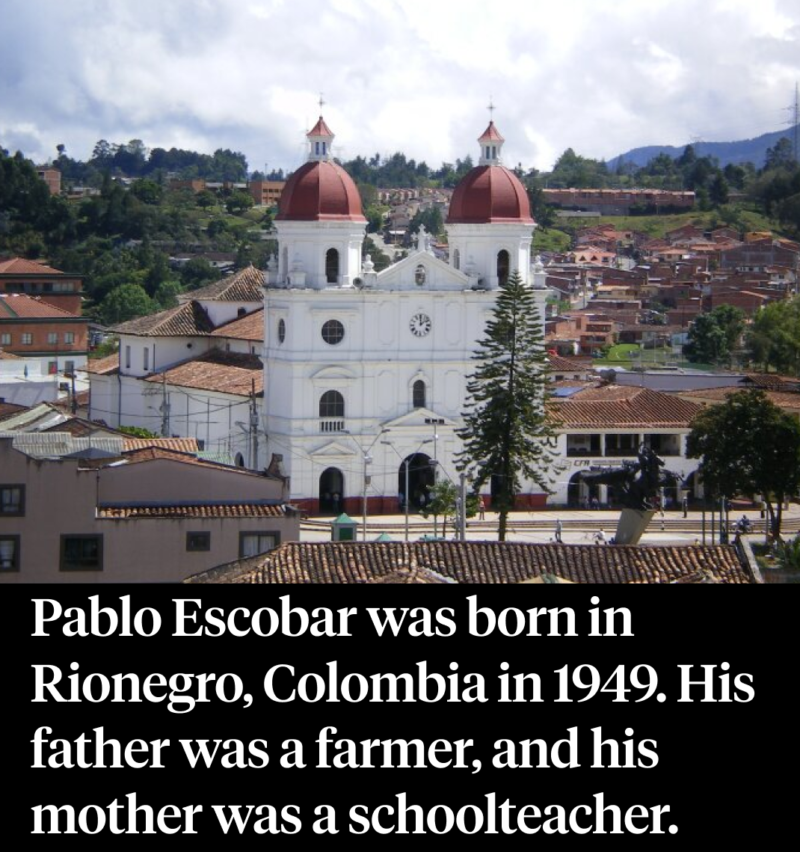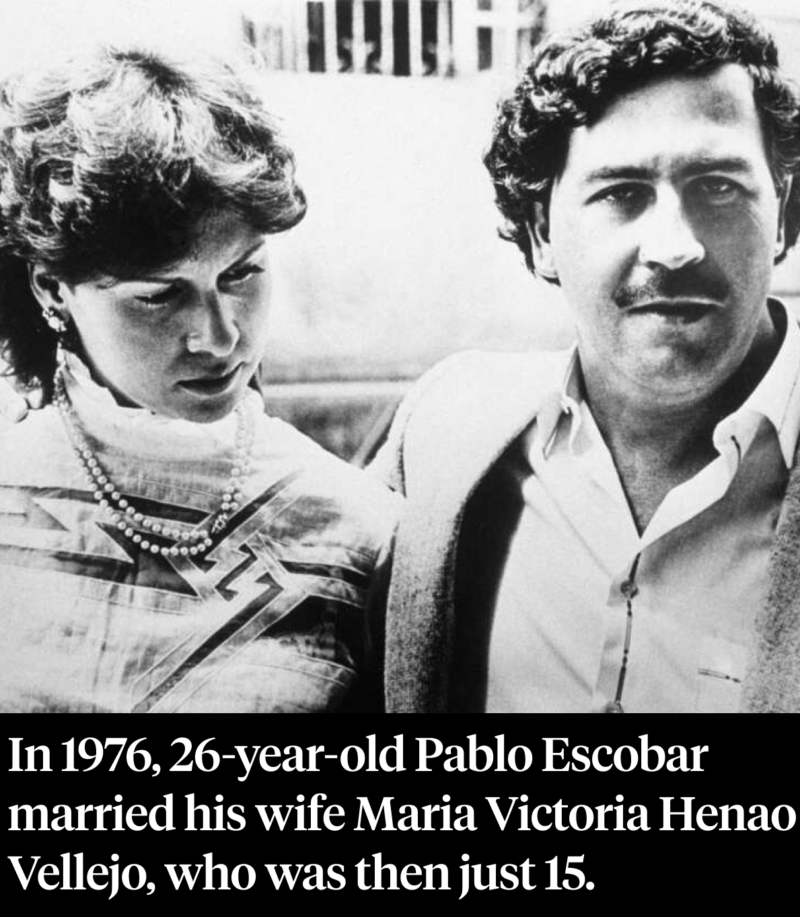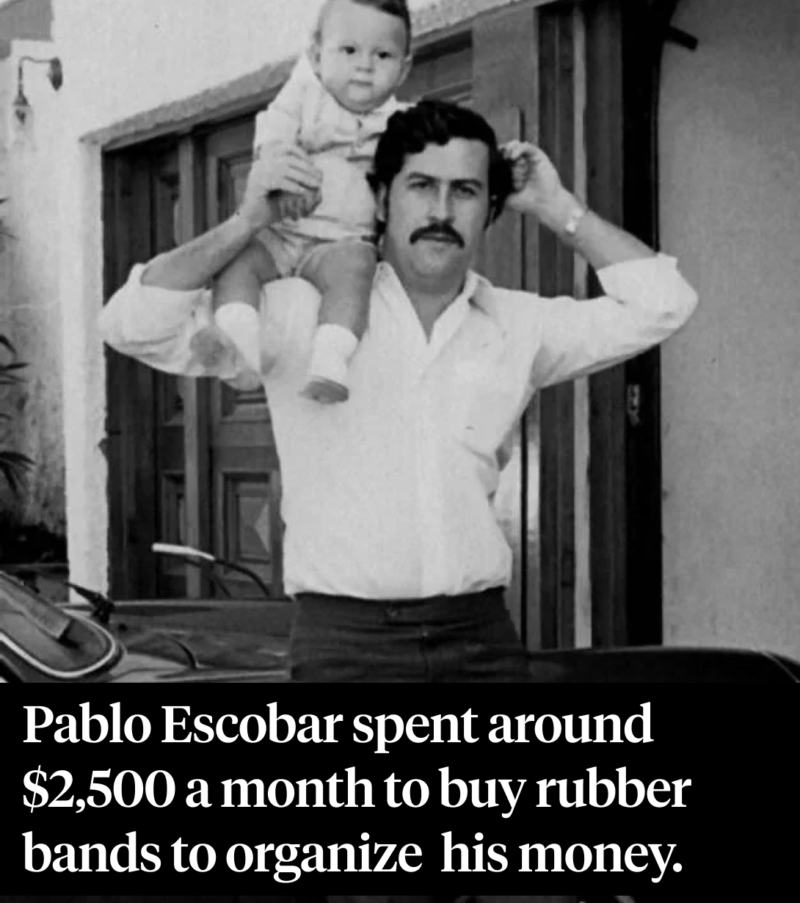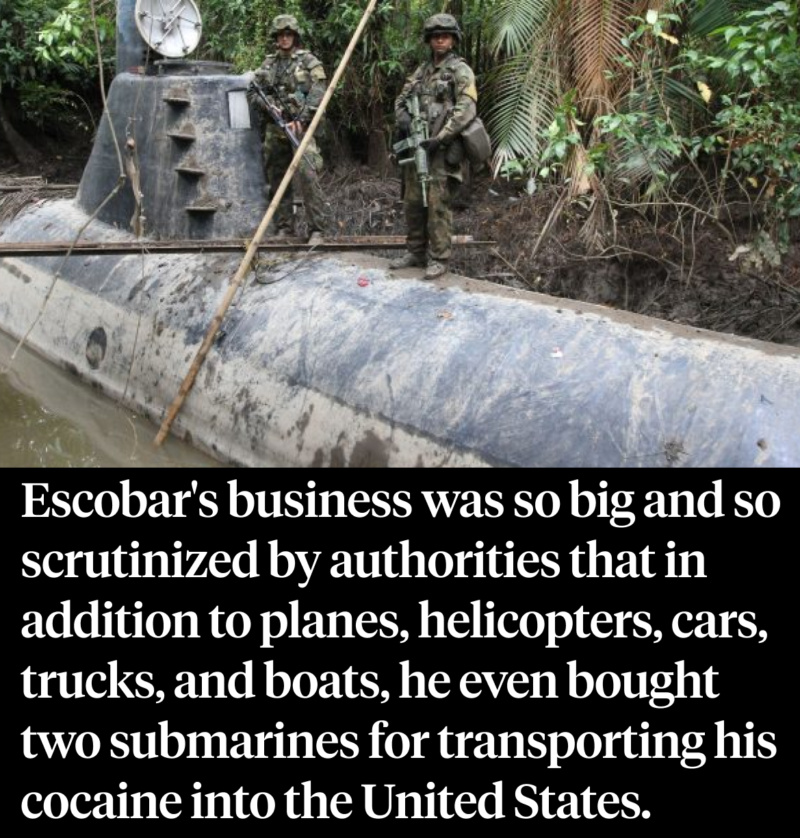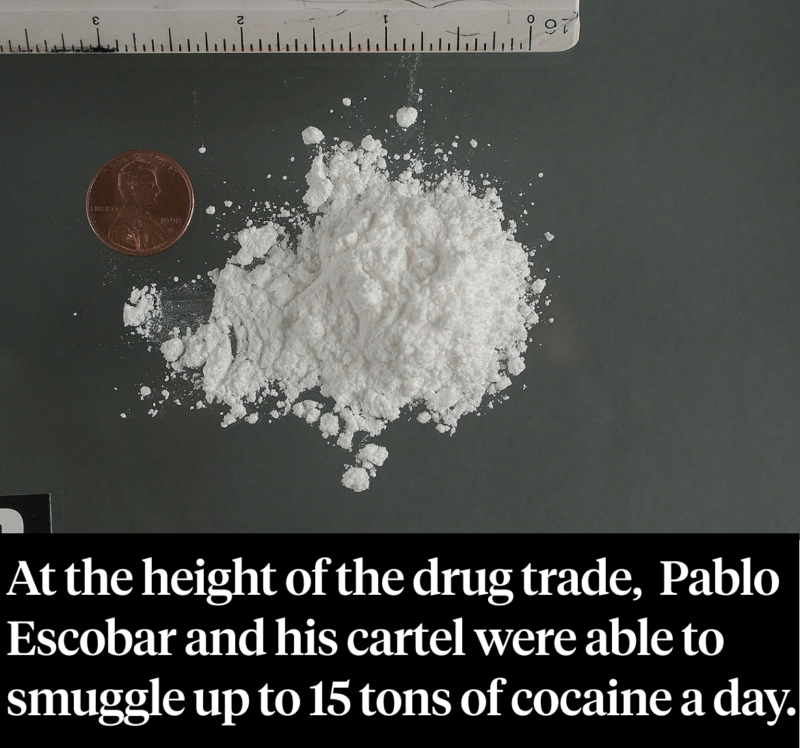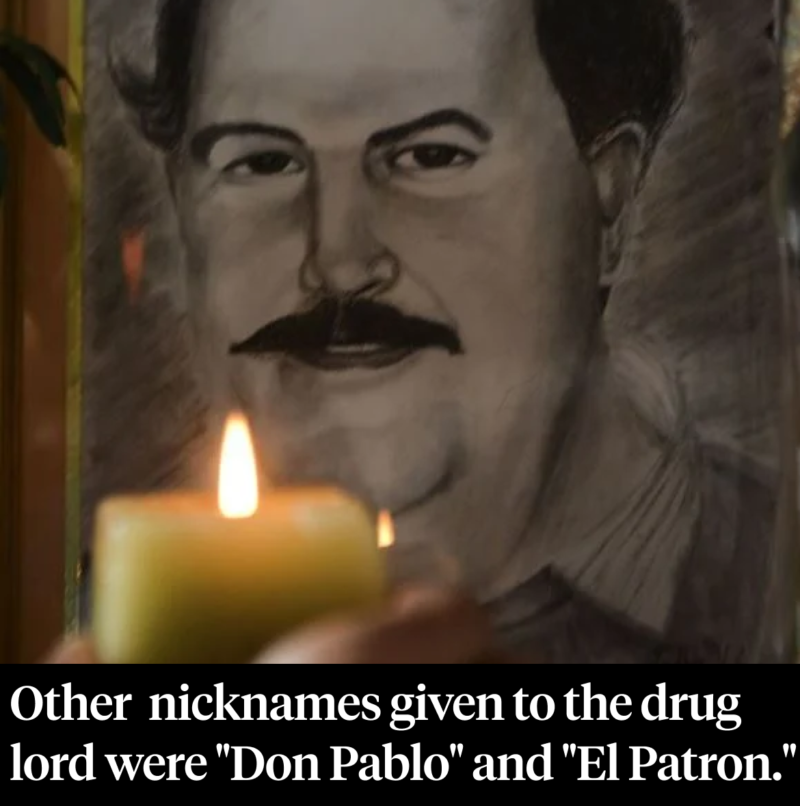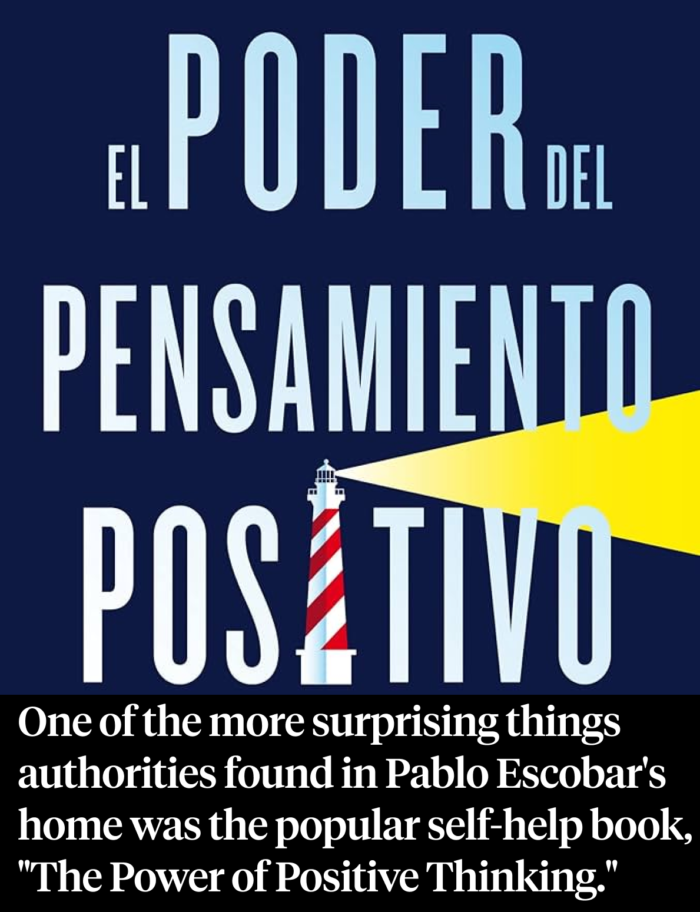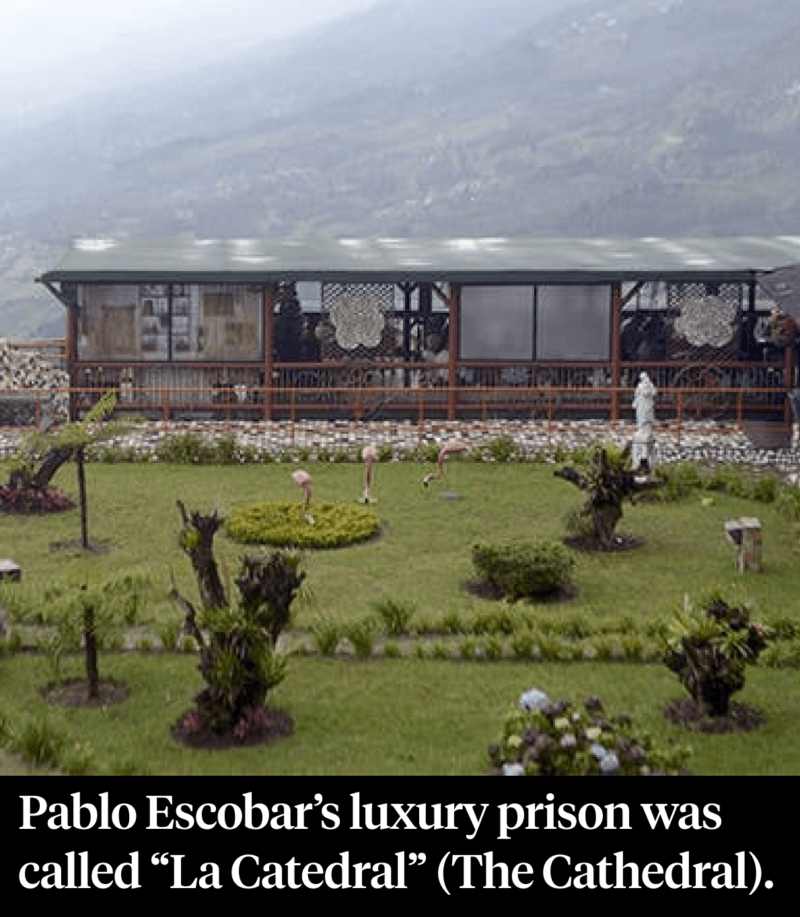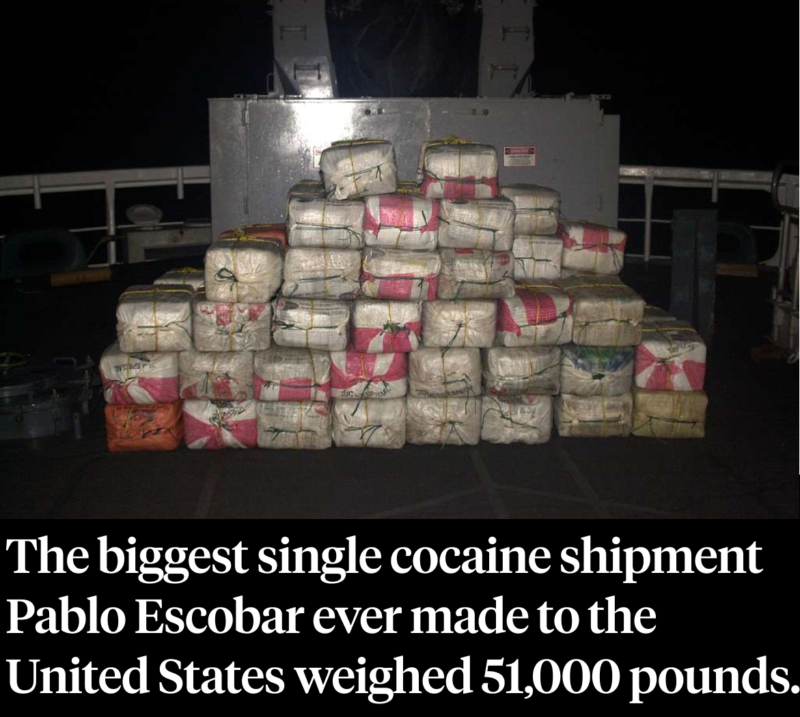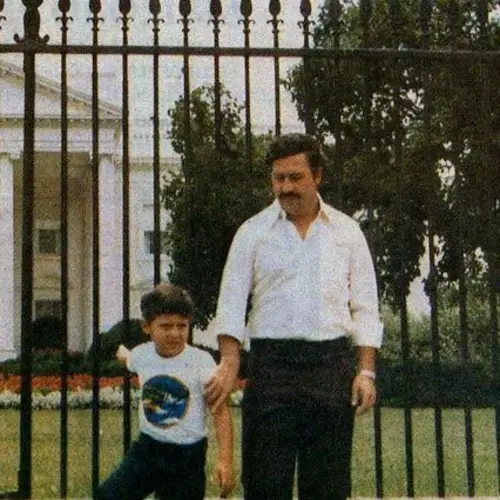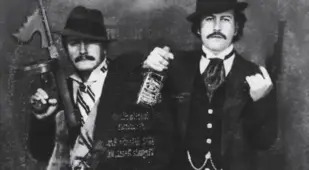Nicknamed the "King of Cocaine," Pablo Escobar founded the Medellín Cartel and had an estimated net worth of $30 billion when he died in 1993.
One of the most shared facts about Pablo Escobar is that he once burned $2 million to keep his daughter, Manuela, warm while the family was in hiding. This one fact says a lot about Escobar’s contradictory character. He was a drug lord — and a caring father. He oversaw a cartel that killed thousands — but used his wealth to help those in need.
The anecdote about Escobar burning money is far from the only fact from his life that shows his multifaceted personality. Born poor in Colombia but determined to make it rich, Escobar went to great lengths to build his wealth. After starting with petty theft, Escobar started trafficking drugs. And as a result, he became one of the richest men in the world.
What came next — for Escobar, Colombia, and the world — still fascinates to this day. Look through the gallery below to discover more facts about Pablo Escobar, and keep reading to learn about his dramatic rise and fall.
The Boy With Dreams Of Riches
Pablo Escobar was born on December 1, 1949, in Rionegro, Antioquia, Colombia, and grew up in Envigado, a suburb of Medellín. Though he and his cousin Gustavo Gaviria had well-educated parents, they decided to leave school and pursue a life of crime. The cousins had one goal: to make it rich.
Gaviria and Escobar were "always looking to do some business or pull off a crime to get some extra money," Escobar's son, Sebastián Marroquín, later wrote in his 2016 book Pablo Escobar: My Father.
The cousins stole tires and cars. They stole headstones out of cemeteries and resold them. They even started kidnapping people. Though Escobar and Gaviria were arrested in the 1970s, that didn't slow them down. Instead, they turned to an even bigger money-making scheme: smuggling cocaine.
How Pablo Escobar Became A Drug Kingpin
Pablo Escobar first started dealing with cocaine in the 1970s, when he smuggled coca paste from Peru to Colombia, had it refined, then sent it north to be sold in the United States. Then, demand for cocaine started to skyrocket in the 1980s — and Escobar struck it rich.
His ragtag group of smugglers and enforcers soon morphed into the fearsome Medellín Cartel. Escobar and his operation came up with ingenious ways to smuggle cocaine into the United States, including hiding it into legal shipments of fruit or clothing, or even mixing the drug into cocoa powder or fruit pulp, from which it could be extracted later.
As Escobar's power grew, he also balanced life with his family. He married his wife, Maria Victoria Henao, and had two children with her: Juan Pablo Escobar Henao (who now goes by Sebastián Marroquín) and Manuela Escobar (who now goes by Juana Manuela Marroquín Santos). But as the drug trade ramped up, Escobar grew richer and richer — and more ruthless.
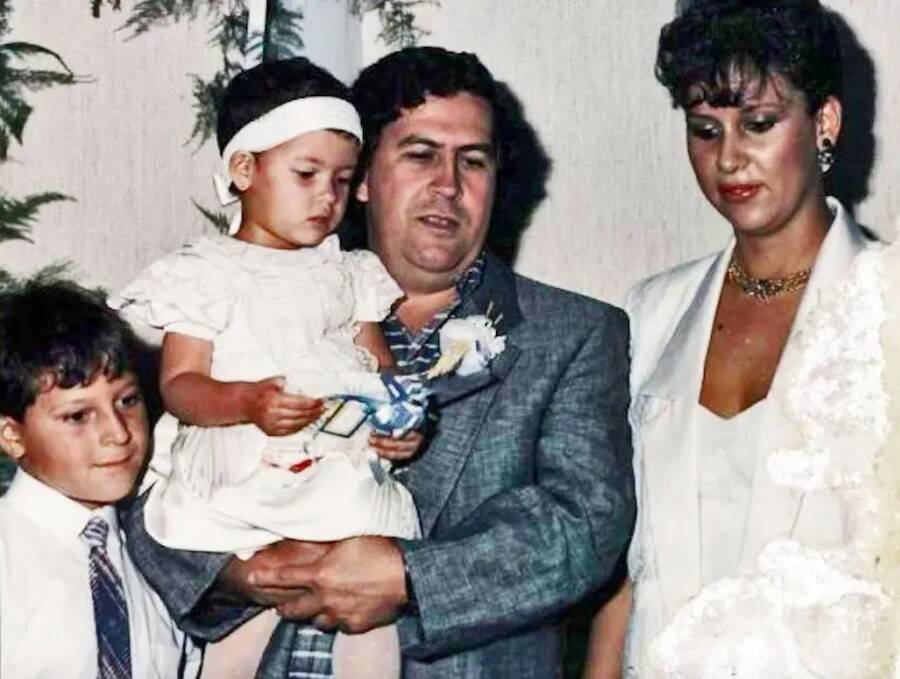
YouTubeIt's an oft-repeated fact that Pablo Escobar was devoted to his family, but his work often put them in harm's way.
In the 1980s, Escobar's cartel pulled in an estimated $70 million a day. Pablo Escobar's net worth ballooned as a result — he was worth between $30 and $60 billion during his lifetime — and he used his riches on things like an estate dubbed Hacienda Nápoles, pet hippos, and helping Colombia's poor.
And as his power grew, Escobar protected it at any cost. It's believed that the drug kingpin was responsible for the deaths of some 4,000 people who dared stand in his way, including police officers, government officials, members of rival cartels, journalists, and ordinary citizens.
It's no surprise that he soon struck Colombian and American authorities as a serious threat. But Escobar proved to be a difficult person for them to stop.
Pablo Escobar's Downfall And Death
In 1991, Pablo Escobar was sent to prison. But it wasn't a prison like most criminals experience. Escobar had struck a deal with Colombian authorities in which he agreed to turn himself in on two conditions: that he wouldn't be extradited to the United States and that he could design his own prison.
The result was La Catedral, an opulent and luxurious prison that included a sauna, a jacuzzi, and a billiards room. In fact, Pablo Escobar enjoyed such freedom at La Catedral that he was able to continue overseeing cartel business, and even ordered the deaths of multiple cartel leaders in 1992.
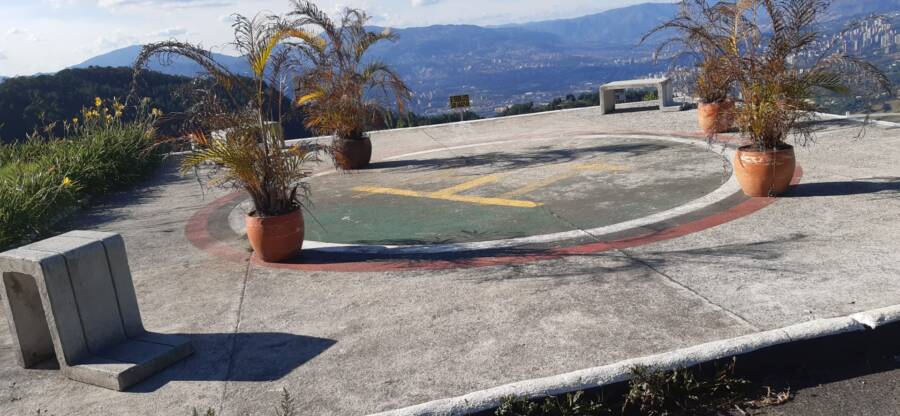
Stefanomione/Wikimedia CommonsA helipad at La Catedral.
For Colombian authorities, this was the final straw. They decided to move Escobar to a different prison — but then he suddenly escaped.
Pablo Escobar and his family were on the run for about a year and a half, pursued by both a Colombian police unit known as the Search Bloc and a group that called themselves "Perseguidos por Pablos Escobar" — which translates to "People Persecuted by Pablo Escobar" — or Los Pepes. And in December 1993, Colombian forces finally tracked Pablo Escobar down.
They cornered him on a rooftop in the Los Olivos barrio of Medellín. Pablo Escobar died at the age of 44 after being shot several times, though it's unknown which group killed him (and some believe that Escobar, cornered and with no options left to him, decided to die by suicide).
With that, Pablo Escobar was dead. But his legacy looms large to this day.
The Drug Lord's Lingering Legacy
After Pablo Escobar's death, some 25,000 people attended his funeral. The guests included many of the people who Escobar had supported financially — including Colombia's poor. For them, he was a "Robin Hood" figure who had shown generosity and compassion by sharing his wealth.
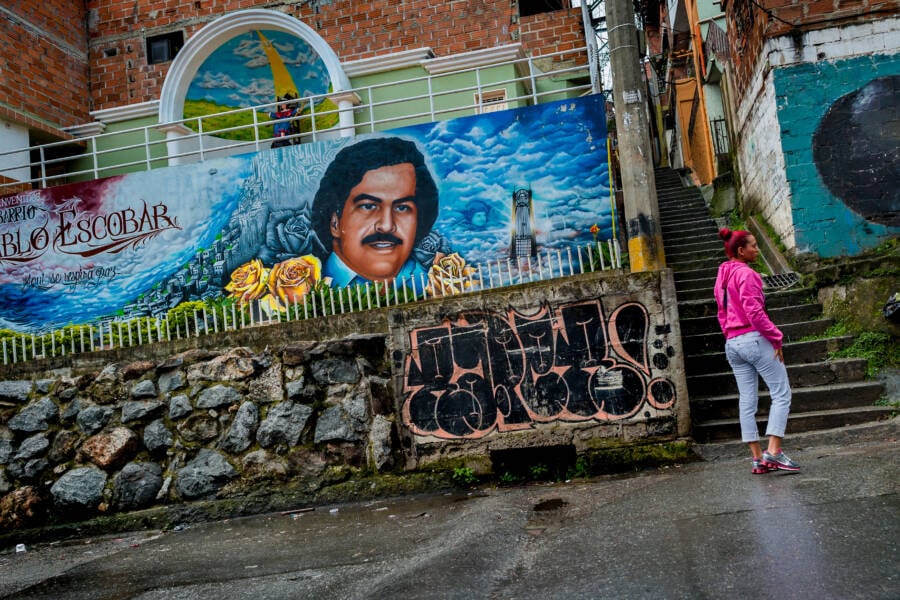
Jan Sochor/Alamy Stock PhotoA street mural of Pablo Escobar in Medellín, Colombia.
But for many other people — including the loved ones of the 4,000 people Escobar and his cartel killed — he remains a cold-hearted villain, someone who caused violence and destruction in Colombia and beyond.
Indeed, Pablo Escobar himself purportedly lived by the mantra of "plata o plomo," which translates to "silver or lead (bullets)." Though he could be a caring figure, both toward Colombia's poor and toward his family, he was ultimately a ruthless drug kingpin who stopped at nothing to get his way.
Discover more facts about Pablo Escobar in the gallery above.
After looking through these Pablo Escobar facts, learn about Amado Carrillo Fuentes, the former head of the Juárez Cartel who died during a botched plastic surgery. Then, check out these insane narco Instagram photos.

